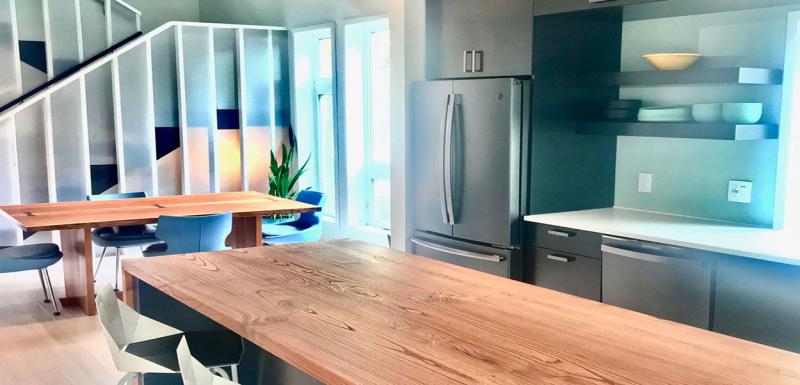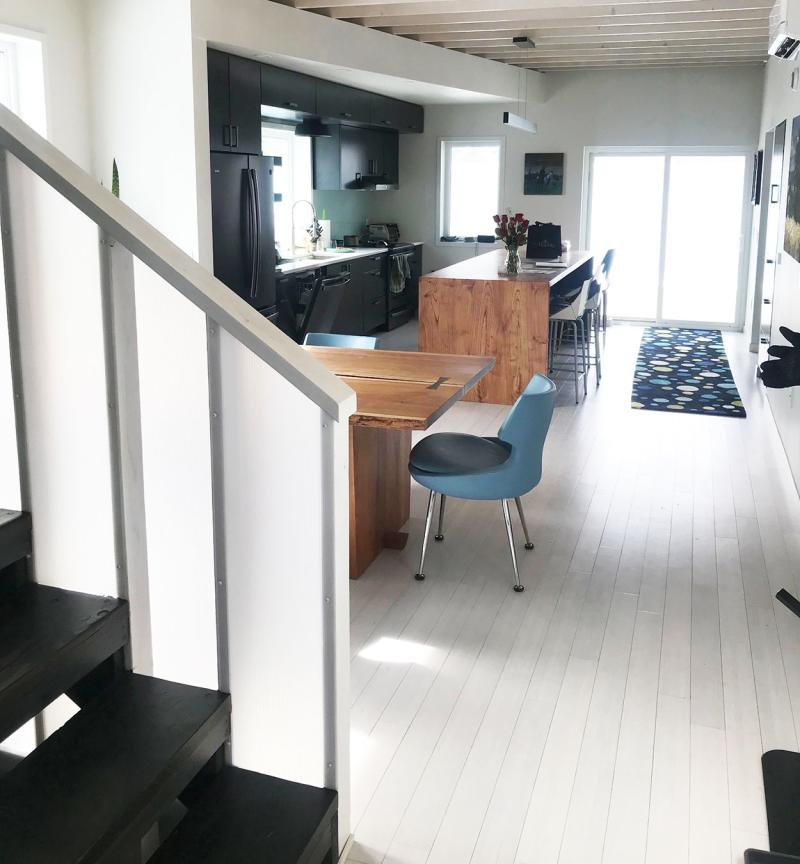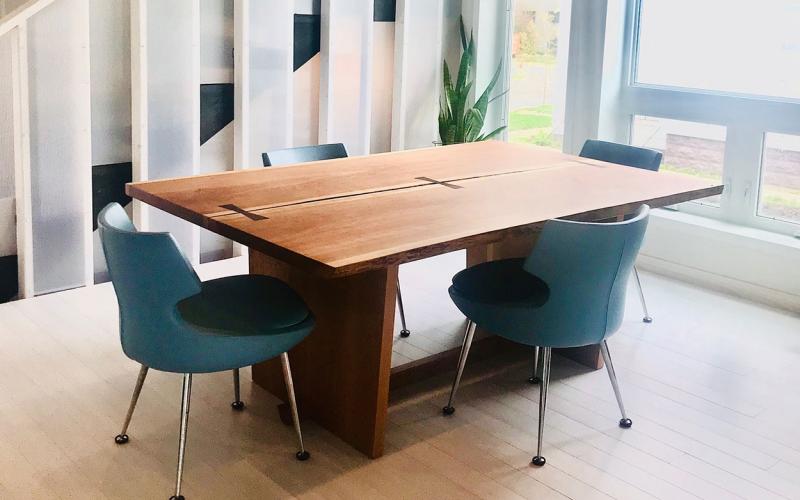
Written collaboratively by Leacey Brown and Gene Fennell, Fennell Design, Inc.
A home is a place of constant activity. There are chores to be done, meals to prepare, conversations, music, entertainment and more all happening every day in homes across the United States.
A home needs to be a place where all occupants can move through the unit without hindrances. People with disabilities need additional space for maneuverability around the home. This resource describes the thee key elements of accessible routes in residential settings.
Three Key Design Elements

-
Element 1: Doorways must be wide enough to fit a wheelchair. The minimum recommendation for an Adaptable Home is 36 inches wide.
-
Element 2: Hallways must also be wide enough to fit a wheelchair. The minimum hallway width for an Adaptable Home is 42 inches wide, although 48 inches is preferred to better accommodate the movement of furniture. Avoid doors opening into the hallway. Doors that open inward avoid creating barriers to people who use wheelchairs and other assistive devices.
-
Element 3: Stairs need to be wide enough to accommodate a stair glider in multi-level units. The minimum recommendation for an Adaptable Home is 42 inches wide, although 48 inches is preferred to accommodate the needs of emergency services professionals, who may need to remove an occupant by gurney downstairs. Other features of adaptable stairs include blocking for hand rails and electrical outlets at the top and bottom of the stairs. All residential stairs should include at least one handrail.
In Conclusion
By ensuring that there are accessible routes to essential facilities in the home, you are ensuring that a person with a disability could live in that unit. It’s important to understand that not every hall, flight of stairs and door has to meet the standards described above. It’s about following these recommendations in essential areas of the home. Essential areas of the home include the kitchen, laundry room, one bedroom, the entry/exit and entertainment areas. By ensuring there are accessible routes to all these areas of the home, you are enhancing the quality of life for older adults and people with disabilities.
The Adaptable Home Certification series was developed collaboratively by South Dakota State University Extension and Fennel Design, Inc.


